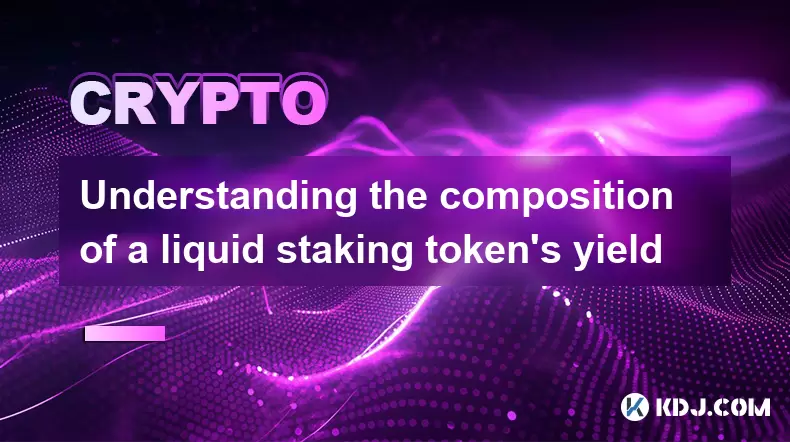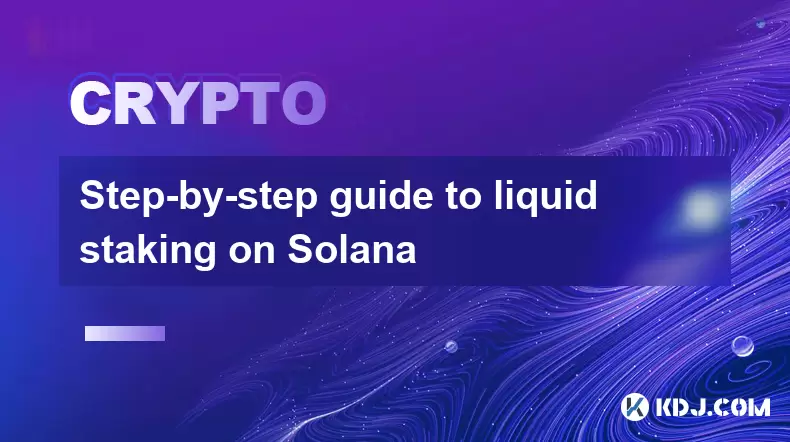-
 Bitcoin
Bitcoin $117500
2.04% -
 Ethereum
Ethereum $3759
3.02% -
 XRP
XRP $3.171
3.30% -
 Tether USDt
Tether USDt $1.000
0.03% -
 BNB
BNB $782.4
2.52% -
 Solana
Solana $187.2
5.62% -
 USDC
USDC $0.0000
0.02% -
 Dogecoin
Dogecoin $0.2380
5.26% -
 TRON
TRON $0.3175
1.07% -
 Cardano
Cardano $0.8227
4.03% -
 Hyperliquid
Hyperliquid $44.50
5.44% -
 Sui
Sui $4.020
10.07% -
 Stellar
Stellar $0.4396
6.28% -
 Chainlink
Chainlink $18.32
4.55% -
 Hedera
Hedera $0.2628
10.71% -
 Bitcoin Cash
Bitcoin Cash $554.8
4.90% -
 Avalanche
Avalanche $24.20
4.60% -
 Litecoin
Litecoin $113.7
2.31% -
 Shiba Inu
Shiba Inu $0.00001413
5.99% -
 UNUS SED LEO
UNUS SED LEO $8.984
0.11% -
 Toncoin
Toncoin $3.326
7.22% -
 Ethena USDe
Ethena USDe $1.001
0.00% -
 Uniswap
Uniswap $10.49
4.56% -
 Polkadot
Polkadot $4.092
4.02% -
 Monero
Monero $326.6
1.30% -
 Dai
Dai $1.000
-0.01% -
 Bitget Token
Bitget Token $4.570
2.49% -
 Pepe
Pepe $0.00001267
5.10% -
 Aave
Aave $297.3
3.10% -
 Cronos
Cronos $0.1344
4.10%
What is the technology behind liquid staking?
Liquid staking lets users earn rewards by staking tokens while retaining liquidity through tradable derivative tokens like stETH, enhancing DeFi participation and capital efficiency.
Jul 26, 2025 at 03:01 pm

Understanding Liquid Staking and Its Core Concept
Liquid staking is a technological innovation within the blockchain and cryptocurrency ecosystem that allows users to stake their tokens while retaining liquidity. In traditional staking models, users lock up their assets for a certain period to support the network's consensus mechanism, usually Proof-of-Stake (PoS). During this time, the staked assets cannot be used elsewhere. Liquid staking addresses this limitation by issuing a derivative token that represents the staked asset. These liquid staking tokens (LSTs) can be freely traded, used in decentralized finance (DeFi) protocols, or transferred without needing to unstake the original asset.
This innovation is particularly important for PoS blockchains where long unstaking periods can discourage participation. By offering liquidity, liquid staking platforms encourage broader participation in network security while enabling token holders to continue engaging with the DeFi ecosystem.
How Liquid Staking Works
The process of liquid staking involves several key steps:
- Users deposit their native tokens (e.g., ETH, SOL, ATOM) into a staking pool or protocol.
- The protocol then stakes those tokens on the underlying blockchain.
- In return, the user receives a liquid staking token, such as stETH (staked ETH), which represents their share of the staked asset plus accrued rewards.
- These LSTs can be used in various DeFi applications, including lending, borrowing, and yield farming.
The staking rewards earned on the native chain are periodically reflected in the value of the LST. For instance, the value of stETH increases over time relative to ETH as staking rewards are distributed to holders. This allows users to benefit from staking rewards without sacrificing liquidity.
Key Technologies Behind Liquid Staking Protocols
Several technologies and components enable the functionality of liquid staking protocols:
- Smart Contracts: These are the backbone of liquid staking systems. They automate the process of accepting deposits, minting LSTs, distributing rewards, and managing withdrawals.
- Oracle Integration: Some protocols use oracles to accurately track and update the value of LSTs based on the accrued staking rewards.
- Validator Management: Liquid staking providers often run or partner with validator nodes to ensure the network remains secure and efficient.
- Tokenization Layer: This layer is responsible for minting and burning LSTs as users deposit or withdraw their assets.
The smart contract layer is particularly crucial, as it ensures that the issuance and redemption of LSTs are trustless and transparent. Users can verify the backing of their LSTs by checking the reserves held in the protocol’s contract.
Security Considerations in Liquid Staking
While liquid staking offers enhanced flexibility, it also introduces new risks that users must be aware of:
- Smart Contract Risk: Since liquid staking relies heavily on smart contracts, any vulnerability or exploit can lead to loss of funds.
- Centralization Risk: Some liquid staking providers operate a large number of validators, which could lead to centralization of power within the network.
- Slashing Risk: If a validator misbehaves or goes offline, the staked tokens may be slashed, which can affect the value of LSTs.
- Counterparty Risk: In custodial models, users trust the provider to manage their assets securely.
To mitigate these risks, users should evaluate the reputation and security audits of liquid staking platforms before depositing their assets. Additionally, decentralized liquid staking solutions are emerging to reduce reliance on centralized entities.
Use Cases and Applications of Liquid Staking Tokens
Liquid staking tokens have become integral components in the DeFi space due to their flexibility and utility. Some notable use cases include:
- Yield Farming: LSTs can be used as collateral in various DeFi protocols to earn additional yields.
- Lending and Borrowing: Platforms like Aave and Compound allow users to lend or borrow LSTs, enhancing capital efficiency.
- Governance Participation: Some LSTs may grant users voting rights in the protocol issuing them.
- Portfolio Diversification: Users can hold LSTs while also participating in other investment opportunities.
By enabling users to earn staking rewards while still engaging in other financial activities, liquid staking enhances the overall efficiency of capital in the blockchain ecosystem.
Frequently Asked Questions
Q1: Can I unstake my tokens at any time with liquid staking?
Yes, most liquid staking platforms allow users to unstake their tokens, but the actual withdrawal from the underlying blockchain may take time depending on the network’s unstaking period. During this time, the LST can still be held or traded.
Q2: Are all liquid staking tokens the same?
No, liquid staking tokens differ based on the blockchain and the platform issuing them. For example, stETH from Lido is different from rETH from Rocket Pool, both representing staked ETH but with different mechanisms and reward structures.
Q3: How is the value of a liquid staking token determined?
The value of an LST typically increases over time relative to the native asset as staking rewards are accrued. The protocol usually adjusts the exchange rate between the LST and the native token periodically to reflect the accumulated rewards.
Q4: Is liquid staking available on all blockchains?
No, liquid staking is only available on blockchains that support PoS consensus and have sufficient infrastructure for tokenization and smart contract execution. Popular chains include Ethereum, Solana, and Cosmos.
Disclaimer:info@kdj.com
The information provided is not trading advice. kdj.com does not assume any responsibility for any investments made based on the information provided in this article. Cryptocurrencies are highly volatile and it is highly recommended that you invest with caution after thorough research!
If you believe that the content used on this website infringes your copyright, please contact us immediately (info@kdj.com) and we will delete it promptly.
- XRP, DOGE, RTX: What's Hot and What's Not in the Crypto World?
- 2025-07-27 03:30:12
- BlockDAG, UNI, POL, Cryptos: Navigating the 2025 Landscape
- 2025-07-27 02:50:12
- Fastex's FTN Collectible Notes: A Fusion of Crypto and Collectibles
- 2025-07-27 02:30:12
- Bitcoin, Institutions, and Resistance: A New Era Dawns
- 2025-07-27 02:30:12
- Bitcoin's Institutional Buying: Fueling the Rally to New Heights?
- 2025-07-27 02:50:12
- Pump.fun's Incentive Campaign: Can it Regain Market Share?
- 2025-07-27 02:55:22
Related knowledge

Understanding the composition of a liquid staking token's yield
Jul 20,2025 at 09:07am
What Is a Liquid Staking Token?A liquid staking token is a representative asset issued to users who stake their native cryptocurrency on a proof-of-st...

Is it better to stake directly or use a liquid staking service?
Jul 22,2025 at 08:21pm
Understanding the Basics of StakingStaking in the context of blockchain and cryptocurrency refers to the process of locking up digital assets to suppo...

What to do during an LST depeg event
Jul 20,2025 at 04:57pm
Understanding LST Depeg EventsAn LST (Liquid Staking Token) depeg event occurs when the token, which is typically pegged to the value of the underlyin...

Can you provide liquidity with liquid staking tokens?
Jul 22,2025 at 10:22am
Understanding Liquid Staking TokensLiquid staking tokens (LSTs) are derivative tokens that represent staked assets on a proof-of-stake (PoS) blockchai...

What are the best wallets for storing LSTs?
Jul 21,2025 at 03:14pm
Understanding LSTs and the Need for Secure StorageLSTs, or Liquid Staking Tokens, are derivative tokens representing staked assets on a blockchain. Wh...

Step-by-step guide to liquid staking on Solana
Jul 20,2025 at 06:42am
What is Liquid Staking on Solana?Liquid staking is a mechanism that allows users to stake their cryptocurrency while retaining liquidity through the i...

Understanding the composition of a liquid staking token's yield
Jul 20,2025 at 09:07am
What Is a Liquid Staking Token?A liquid staking token is a representative asset issued to users who stake their native cryptocurrency on a proof-of-st...

Is it better to stake directly or use a liquid staking service?
Jul 22,2025 at 08:21pm
Understanding the Basics of StakingStaking in the context of blockchain and cryptocurrency refers to the process of locking up digital assets to suppo...

What to do during an LST depeg event
Jul 20,2025 at 04:57pm
Understanding LST Depeg EventsAn LST (Liquid Staking Token) depeg event occurs when the token, which is typically pegged to the value of the underlyin...

Can you provide liquidity with liquid staking tokens?
Jul 22,2025 at 10:22am
Understanding Liquid Staking TokensLiquid staking tokens (LSTs) are derivative tokens that represent staked assets on a proof-of-stake (PoS) blockchai...

What are the best wallets for storing LSTs?
Jul 21,2025 at 03:14pm
Understanding LSTs and the Need for Secure StorageLSTs, or Liquid Staking Tokens, are derivative tokens representing staked assets on a blockchain. Wh...

Step-by-step guide to liquid staking on Solana
Jul 20,2025 at 06:42am
What is Liquid Staking on Solana?Liquid staking is a mechanism that allows users to stake their cryptocurrency while retaining liquidity through the i...
See all articles

























































































